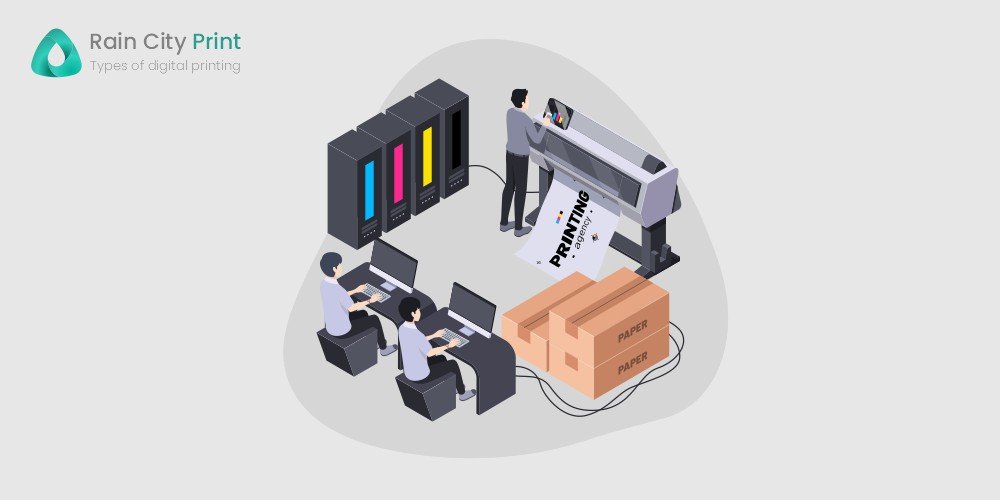In the rapidly evolving landscape of printing technology, digital printing has emerged as a versatile and efficient method that has revolutionized the way businesses and individuals approach printing needs. Rain City Print, based in Vancouver, Canada, stands at the forefront of this technological wave, offering digital printing services that cater to a diverse range of needs.
In this comprehensive guide, we’ll delve into the world of digital printing, exploring its definition, benefits, applications, and why it has become a cornerstone in the realm of printing services.
Defining Digital Printing
Digital printing is a modern printing method that involves reproducing a digital image directly onto a variety of media. Unlike traditional methods such as offset printing, which involves the use of plates and rollers, digital printing transfers the image directly from a digital file to the printing substrate, whether it be paper, fabric, or other materials.
Key Components of Digital Printing
- Digital Files:
- In digital printing, the process starts with a digital file, typically created using design software like Adobe Photoshop or Illustrator. These files can be easily edited and manipulated, providing a level of flexibility not achievable in traditional printing methods.
- Printing Devices:
- Digital printing employs specialized printers equipped with advanced technology, such as laser or inkjet printers. These printers use high-quality inks and toners to reproduce the digital image with precision.
- Substrates:
- Digital printing accommodates a wide range of substrates, from standard paper to specialty materials like canvas, vinyl, and even metal. This flexibility makes it suitable for various applications, including business cards, banners, and promotional materials.
Advantages of Digital Printing
- Cost-Effective for Short Runs:
- Traditional printing methods often involve high setup costs, making them less economical for small print runs. Digital printing, on the other hand, excels in producing cost-effective short runs, making it ideal for businesses with limited print needs.
- Quick Turnaround Time:
- Digital printing eliminates the need for lengthy setup processes, enabling quick and efficient production. This rapid turnaround time is particularly advantageous for businesses with time-sensitive printing requirements.
- Variable Data Printing:
- Digital printing allows for variable data printing, meaning that each printed piece can be personalized with unique information. This capability is valuable for personalized marketing materials, direct mail campaigns, and more.
Applications of Digital Printing
- Marketing Collaterals:
- Digital printing is widely used for creating marketing materials such as brochures, flyers, and posters. Its ability to produce vibrant and high-quality prints enhances the visual appeal of promotional content.
- Business Cards and Stationery:
- For businesses looking to make a lasting impression, digital printing offers a cost-effective solution for producing professional and eye-catching business cards and stationery.
- Custom Apparel Printing:
- The versatility of digital printing extends to textiles, allowing for the creation of custom apparel with intricate designs and vibrant colors. This is particularly popular in the production of custom T-shirts and other personalized garments.
- Photographic Printing:
- Digital printing is widely used for producing high-quality photo prints, offering a level of detail and color accuracy that meets the standards of professional photographers.
As Rain City Print continues to provide cutting-edge digital printing services in Vancouver, understanding the fundamentals of this technology becomes crucial. Digital printing’s flexibility, cost-effectiveness, and quick turnaround time make it a preferred choice for businesses and individuals alike.
By harnessing the power of digital printing, Rain City Print ensures that your visual communication needs are met with precision and excellence.









